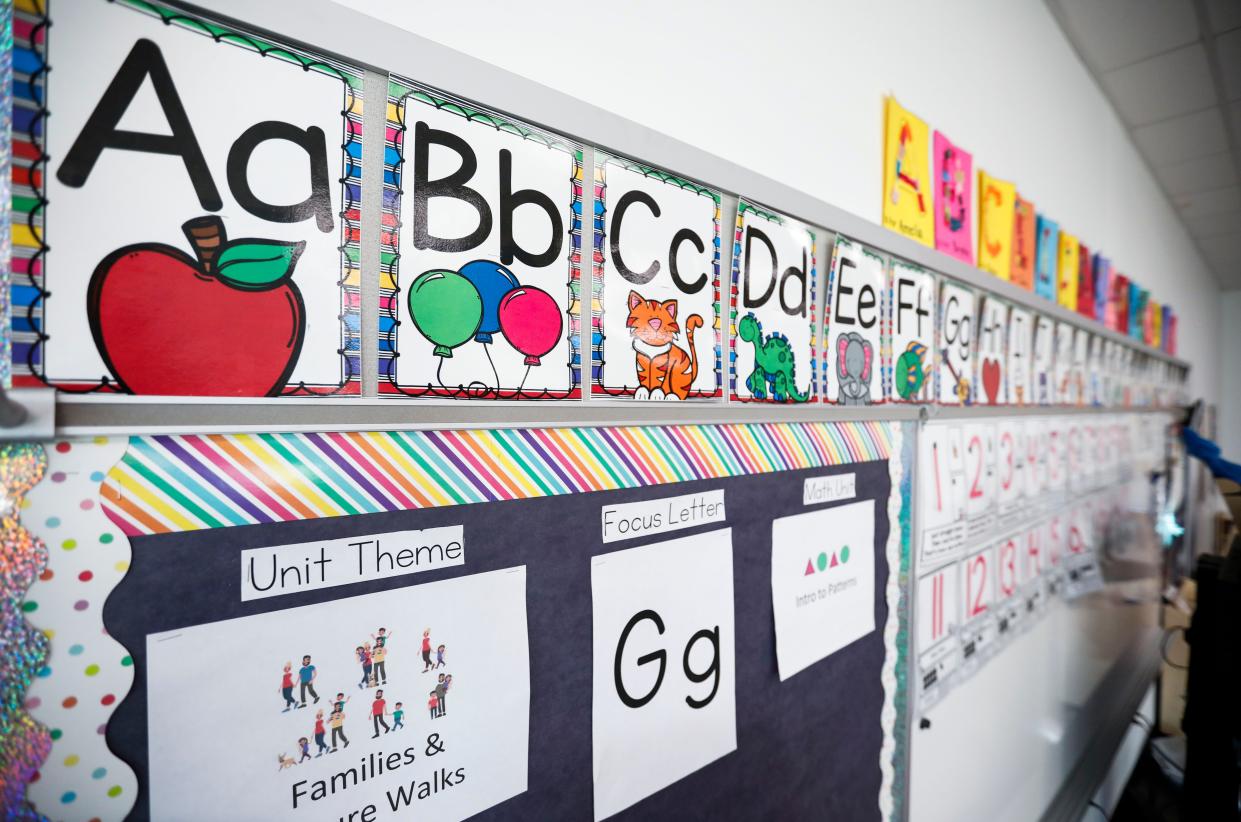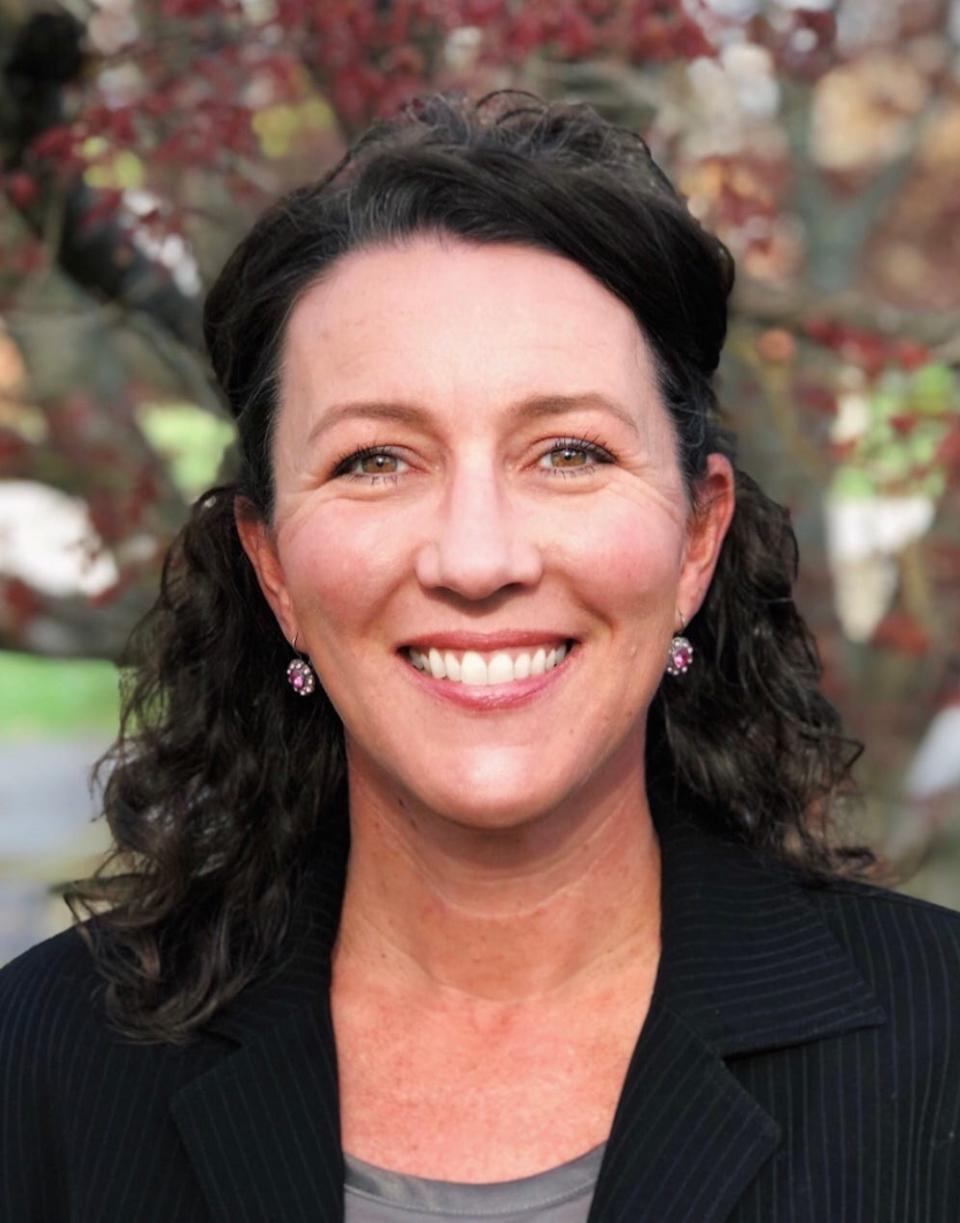How each SPS elementary, middle and high school fared on Missouri's annual report cards

Carver Middle School Principal Dana Powers could hardly wait for the state report card to be released so she could celebrate publicly.
"The focus is every kid, every day. That is something our teachers work really hard at and I'm really proud of them," Powers said.
"It is really validating when you see that data come in and you're like 'We've been doing this hard work for years and it is really showing.' It is impressive to see the movement."
The Missouri Department of Elementary and Secondary Education released the Annual Performance Report Dec. 18. In it, schools and districts were awarded points based on student test scores — on state-mandated exams plus the ACT and other national tests — plus other factors such as attendance and graduation rates, advanced courses, and how many graduates go on to college, careers or the military.
Points can be awarded for meeting goals or showing significant growth toward meeting the goals set by the sixth iteration of the Missouri School Improvement Program or MSIP6. Over time, the state uses the APR to determine the accreditation level for each district.
No change in state accreditation level will be made until the end of the 2023-24 year, when the state has three full years of APR scores under the new MSIP6 benchmarks.
Springfield Public Schools' APR was a mixed bag — a score of 75.5% out of a possible 100% for the 2022-23 year is up slightly from the prior year and consistent with maintaining full state accreditation.
"We love to see improvement overall and we did," said Nicole Holt, deputy superintendent of academics in SPS.

"When we look at achievement data and we drill down to our campuses, we are excited that over half ... are showing increased points on their individual school APR reports from last year to this year."
In Missouri, a total of 242 districts scored between 70-79% on the APR, 167 scored 80-89% and 22 scored 90% or higher. The rest, 118 districts, scored below 70%.
Districts that repeatedly score below 70% may face provisional accreditation and those below 50% — there were just two each last year — may face loss of accreditation.
"The call on our district as we move forward is helping us to help teachers to have the skills they need to be effective in every single classroom. It is about every single classroom in our district, where kids are, and how we can ensure that they have the tools that they need and they can be effective in content that they are teaching," Holt said. "That requires hard conversations. That requires systematic consistency in how we approach teaching and learning."
Holt added: "We owe it to our children and it is the reason that we got into this (profession) to serve them and ensure that they have what they need when they leave us to be contributing members of our community."
How Springfield compares to peers
The largest district in Missouri, Springfield outscored nearly all of its urban peers — including Columbia, Hazelwood, Kansas City, St. Joseph and St. Louis City — but fell just behind Independence.
"It is easy to find the bright spots and you have to do that — you have to celebrate," Holt said.
As part of the rollout, Missouri education officials said districts are still recovering from pandemic-related academic disruptions, chronic absenteeism, and teacher shortages.
The Springfield APR score of 75.5% puts the district at No. 327 of the 553 districts, both K-8 and K-12, and charter schools in the entire state.
APR points are awarded for performance or continuous improvement. In the latter, the district earned full points in every category except attendance — where it received no points.
"One of the most glaring red flags that we already knew about before the data but the data confirms is our need to focus on attendance and getting our students to school," Holt said.

Superintendent Grenita Lathan made attendance a priority this school year and some progress has been made. The goal is to improve attendance by 2% this year.
Holt said the work will require the help of schools, parents and the community.
"If they are not with us, we can't teach them and focusing on breaking down the barriers for families that can't get their students to school or have historically not prioritized getting their kids to school and the implications of that as they move through our system, we are addressing that," Holt said.
For performance, the Springfield district received maximum points for its graduation rate, graduate follow-up, and advance courses. Overall, it was "on track" for English Language Arts and social studies but was "approaching" the goal in math and science.
"Our kids are not getting as close as they need to be to proficiency," Holt said. "That is a problem."
A look at how Springfield fared on state-mandated exams, which must be given in annually. Students are generally tested in grades 3-8 and at the end of specific high school courses.
44% of SPS students were proficient or advanced in English language arts compared to the state average of 43.5%;
38.6% of SPS students were proficient or advanced in math compared to the stage average of 40.5%;
36.3% of SPS students were proficient or advanced in science compared to state average of 39.1%;
35.5% of SPS students were proficient or advanced in social studies compared to state average of 39.3%;
Springfield's graduation rate of 96.4% was higher than state average of 90.8%.
The district scored "average" or "below average" in how much growth the students make from one year to the next in English language arts, math, science and social studies.
"We are still not growing them well enough and so that is a concern when we think about the impact that has, year over year, on kids," Holt said.
More: Nixa Public Schools outperforms regional peers, most of Missouri in annual report card
"We have really been intentional"
Carver's score, on a 100-point scale, jumped to 70.4% for the 2022-23 year, up from 56.6% the prior year.
The middle school was "on track" in English language arts and science and showed "above average" gains in both reading and math.

Powers said despite the success, there is more progress to make.
"Immediately my eyes go to where are we going to get better, where do we need to improve," she said.
"We have work to do, every single building in every single district has work to do. A new group of kids come to us every year. We have to start over every single year."
The high school APR scores for the 2022-23 were all lower than the prior year. Hillcrest and Central were relatively flat, only losing a little ground, but the drop at Glendale was the largest.
More: Annual report cards for Missouri schools released — here's how Ozarks districts scored
Sequiota and Truman elementary schools posted the largest APR score drop but the prior year they had two of the highest scores, 88.1% at Sequiota and 82.8% at Truman.
Carver was the only middle school to have a double-digit increase in its APR score but 10 elementary schools showed similar double-digit growth: Bissett, Boyd, Field, Rountree, McGregor, Holland, Mann, Pleasant View, Sherwood and Williams.
The growth at Pleasant View Elementary was the highest, hitting 84.2% last year for a jump of 34%.

Kim Yeary, principal of Pleasant View K-8, described the elementary ARP score as a "huge celebration."
The school was "on track" in English language arts, math and science and showed "above average" growth in reading and math.
She said teams of teachers meet every week to strategize and work with an instructional coach to help plan.
"Good teaching is good teaching so whether you are a kindergarten teacher or a fifth-grade teacher, the strategies which we use to help our kids and make sure we are addressing all needs are pretty much the same," Yeary said.
At Rountree Elementary, which also saw a sizeable increase in the APR for last year, students were "on track" in English language arts and science and approaching the goal in math.
The school made "average" growth in reading but "above average" in math.
"As I look at our impact in language arts and in math, it's phenomenal the growth that we have seen this year," said Misty Ramsey, principal of Rountree.

Ramsey, who started at Rountree in 2019, said the school posted its highest math scores during the past year.
"It's definitely a celebration and to think about the recovery after COVID that we have been able to gain back in language arts and showing a projection above the state average is also a really commendable thing for our team," Ramsey said.
"We have really been intentional the last two years — this year and the previous year — with our time as we work together in teams to plan and it really is what is the (state) standard asking, what do we really need students to learn and know in our classrooms and are we all thinking alike. Are we all intentional with our work? And how do we move our students to ensure that they're meeting our expectations," Ramsey said.
"The conversations are rich. The conversations are sometimes hard. The conversations can sometimes get messy but every single person in this building is dedicated to that work."
APR scores for Springfield schools
The 2023 Annual Performance Report includes points for both performance and continuous improvement.
Here is the percentage of points earned for each Springfield elementary, middle, intermediate and high school and if it was an increase or decrease from the prior year:
Elementary schools:
Gray − 85.2% (decrease)
Pleasant View − 84.2% (increase)
Disney − 80.5% (decrease)
Harrison − 78.3% (decrease)
Hickory Hills − 77.3% (increase)
McBride − 76.5% (increase)
Robberson − 74.5% (increase)
York − 72.3% (decrease)
Pittman − 69.7% (same)
Rountree − 68.1% (increase)
Wilder − 66.7% (increase)
Field − 66.5% (increase)
Bissett − 62.8% (increase)
Williams − 62.6% (increase)
Boyd − 61.9% (increase)
Pershing − 61.9% (increase)
Fremont − 61.8% (increase)
Sherwood − 60.3% (increase)
Truman − 59.4% (decrease)
Delaware − 59% (decrease)
Bowerman − 58.9% (increase)
Sequiota − 58.2% (decrease)
Mann − 58.1% (increase)
Weller − 56.6% (increase)
Sunshine − 55.5% (increase)
Jeffries − 54.8% (increase)
Cowden − 53.2% (increase)
Holland − 51.3% (increase)
Bingham − 48.3% (same)
McGregor − 43.6% (increase)
Weaver − 42.9% (decrease)
Watkins − 42.2% (decrease)
Westport − 40.8% (increase)
Twain − 40.3% (decrease)
Intermediate, middle schools:
Wilson's Creek − 91.2% (decrease)
Cherokee − 81.8% (increase)
Pershing − 74.4% (decrease)
Carver − 70.4% (increase)
Hickory Hills −67% (increase)
Pipkin − 55.2% (decrease)
Pleasant View − 52.2% (decrease)
Jarrett − 42% (decrease)
Reed − 35.9% (decrease)
Westport − 32.5% (decrease)
High schools:
Kickapoo − 71% (decrease)
Central − 67.2% (decrease)
Glendale − 63.8% (decrease)
Hillcrest − 59.3% (decrease)
Parkview − 54.3% (decrease)
Claudette Riley covers education for the News-Leader. Email tips and story ideas to criley@news-leader.com.
This article originally appeared on Springfield News-Leader: How each Springfield school fared on Missouri's annual report card

